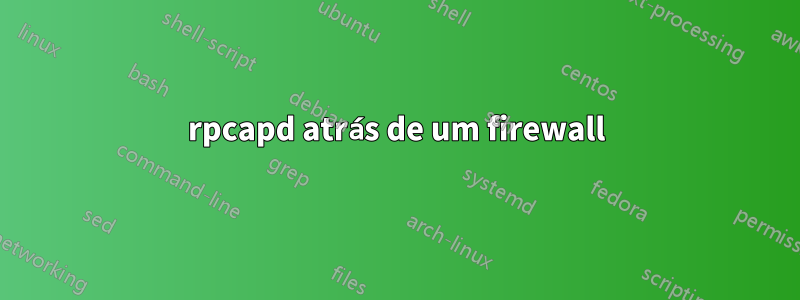
Tenho um servidor remoto com rpcapd instalado que segue regras rígidas de política de segurança. Qualquer cliente pode acessar o servidor apenas via firewall que siga a mesma política de segurança (por favor, não me culpe, não foi ideia minha). A única porta aberta no servidor e no firewall para fins de captura remota é a tcp:2002. Além disso, o firewall bloqueia quaisquer portas de saída desconhecidas. Então a imagem toda fica assim:
client >> firewall (tcp:2002 opened) >> target server (tcp:2002 opened)
A questão é: o rpcapd usa alguma "porta de dados" (tcp ou udp) para encaminhar o tráfego capturado para o cliente? Se sim, quais são essas portas? Posso configurá-los manualmente através de algum switch cmd?
A única porta mencionada nos documentos é ...
-p <port> It sets the port the daemon has to bind to. Default: it binds to port 2002.
.. mas se for apenas algum tipo de "porta de controle", a captura remota não funcionará no meu caso.
Responder1
Ao ler a documentação, o Modo Ativo parece útil para o esquema que você fornece: [fonte:https://www.winpcap.org/docs/docs_412/html/group__remote.html]
Remote Capture Running Modes
The Remote Capture Protocol (RPCAP) can work in two modes:
Passive Mode (default): the client (e.g. a network sniffer) connects to the remote daemon, it sends them the appropriate commands, and it starts the capture.
Active Mode: the remote daemon try to establish a connection toward the client (e.g. the network sniffer); then, the client sends the appropriate commands to the daemon and it starts the capture. This name is due to the fact thet the daemon becomes active instead of waiting for new connections.
The Active Mode is useful in case the remote daemon is behind a firewall and it cannot receive connections from the external world. In this case, the daemon can be configured to establish the connection to a given host, which will have been configured in order to wait for that connection. After establishing the connection, the protocol continues its job in almost the same way in both Active and Passive Mode.


